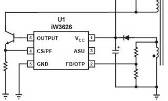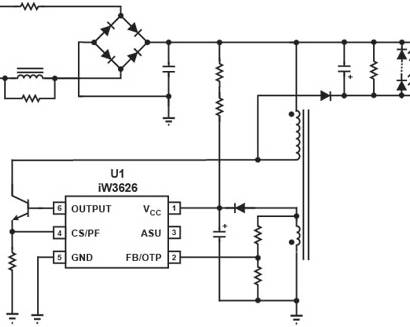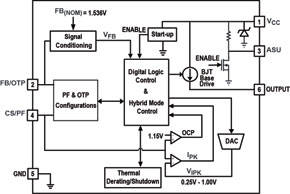iWatt has taken a step into the non-dimmable power factor corrected LED bulb market with its first ac-dc product to feature an npn power switch.
"This is new for us: non-dimmable plus PFC. Dimmable bill-of-materials is around $2. This is $1," iWatt v-p marketing Scott Brown told Electronics Weekly.

Using a bipolar transistor as a mains switch rather than a mosfet is part of the cost reduction. This is not unique, CamSemi got there first, but it is an indication that iWatt is taking cost reduction seriously in this price-sensitive region of the LED lighting market.
PFC
The chip is called iW3626, and its only concession to complexity is the inclusion of power factor correction (PFC).
To avoid the need for an expensive mains voltage electrolytic capacitor, the topology is single-stage, which inevitably means current ripple (seen as 100/120Hz flicker by some consumers) in the output current if PFC is activated.

In what is though to be a market first, iWatt is allowing the amount of PFC to be programmed between 0.7 and 0.9 with a resistor.
"To correct power factor, you modulate input impedance," said Brown. "This is not a concern in two stage converters, but you inherently end up with ripple with only one stage. To minimise output ripple we have given the customer flexibility to configure their PFC to be no more than the minimum they need with a resistor on the CS/PF pin. They can put a bigger capacitor on the output if they want low ripple and high PFC."
The converter still needs an electrolytic capacitor on the output.
Electrolytic capacitors are potentially the shortest life component in an ac-dc converter, and at least one other manufacturer offers an ac-dc chip which allows electrolytics to be replaced with ceramic capacitors in an LED light bulb.

Electrolytics
Brown asserts that while this is possible, in practice LED light bulbs rely on electrolytics.
"Ceramics are more expensive," he said, claiming: "We tear down bulbs, and have never seen one without electrolytics."
High temperature is the enemy of reliability in all electronic components, particularly electrolytics.
Unfortunately, unwitting high-temperature operation is an innocent consequence of consumers retro-fitting LED light bulbs in luminaires designed for incandescent bulbs, some of which have poor heatsinking causing the LED bulb to break.
iWatt's response to accidental component cooking is to sense temperature in the chip and throttle back output power when things get too hot. Customers set the trip temperature with a resistor.
This is a first at the low end of the market, said Brown: "Over temperature de-rating gives predictable life. It is supported in our higher-end products, and some of our competitors support it, but not at the low end. In this chip, output current ramps in steps down to 10%, then 20%, down to zero if necessary. In most cases, I think it will only do one, or maybe two, steps."
Output power from the non-isolated design is 10W, efficiency is over 85% at 220V, and current regulation is said to be better than +/-5%.





